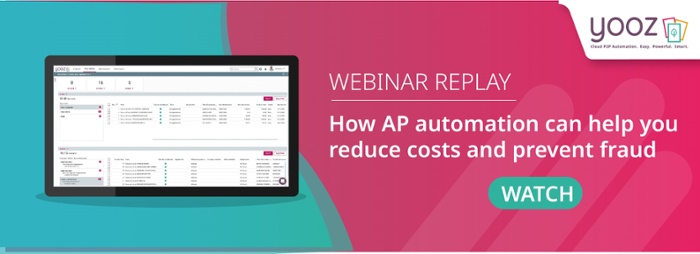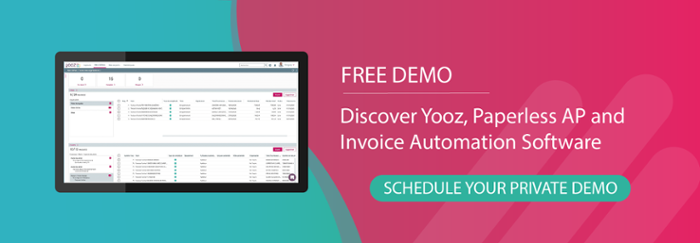Upon reception, supplier invoices enter a processing circuit that leads them through to payment and archiving. This circuit, sometimes lengthy and convoluted, can accumulate inefficiencies, delays, errors and ultimately costs. The culprit is a manual, fragmented and often artisanal process in the Accounts Payable department, which can be significantly improved by modern invoice digitalisation solutions that rely on AP automation to manage the end-to-end Purchase-to-Pay (P2P) process. Adopting such an approach can reduce invoice processing costs by up to 80%. How are such considerable cost savings achieved? Simply because the benefits accumulate at each stage.
Receiving documents and creating accounting entries: the relief of digitalisation
Companies continue to receive paper invoices. And in large quantities! This mass of mail to be processed represents a significant burden, as studies estimate the total cost of processing an invoice at £13.68 in the UK. Implementing automated accounting software can significantly reduce these costs by streamlining the invoice processing workflow and minimizing manual intervention
Expenses begin upon receipt of invoices with the sorting of documents, routing to the accounting department and above all, the data entry. This manual, valueless task is not only costly, time-consuming and tedious but also a source of errors. These errors can occur anywhere - on the purchase order number, amount, or supplier name - and can subsequently have chain reactions throughout the process, potentially resulting in very damaging consequences.
Digitalising invoices upon arrival addresses all of this. Thanks to Optical Character Recognition (OCR), Artificial Intelligence (AI) and Machine Learning (ML), the invoice is transformed into a digital format, with the data on it being captured and entered into the system, in a process that is more reliable than manual entry. The increase in productivity and decrease in errors are substantial: Ernst & Young calculated that one person could process up to 6,000 paper invoices per year, but up to 90,000 electronic invoices! In short, this initial digitalisation step sets the accounts payable process on the right track for efficiency and cost reduction.

Validation and accounting allocations: the great leap forward of automation
It might seem like getting rid of paper and its direct and indirect costs is the great benefit of invoice digitalisation, however this is not entirely the case. In reality, the main source of savings and efficiency lies in the subsequent automation of tasks and processes.
Key data on invoices, identified by AI is immediately fed into the accounting workflow: matching with purchase and receipt orders, validation, approval and accounting allocations. Next, any preconfigured workflow rules are applied and when human intervention is still necessary, the person receives an alert and precise information to act upon. In total, it is possible to reduce the duration of the invoice processing cycle and therefore the costs associated with delays, by 2 to 5 times.
Furthermore, digitalisation provides precise, complete and real-time information allowing the tracking of indicators that would be exceedingly complicated to calculate otherwise. Whether they relate to the invoice processing process itself (outstanding, duplicates, payment delays, unreceived invoices etc) or overall performance, these indicators allow the CFO and finance decision-makers to better manage the activity of their department and that of the company. This is why process automation and new management tools are at the forefront of CFO concerns.
Payment: the solution to end delays
The culmination of this process is naturally the payment to the supplier. This means that unnecessary payment delays and potential penalties are avoided, which can be a source of tension with suppliers. It is estimated that managing payment delays takes up nearly a third of accountants' time.
Of course, this is conditioned on the successful completion of all control and validation procedures.
In this regard, another benefit of digitalisation and automation is that they allow for the creation of differentiated rules, for example, to relax checks on certain types of invoices (amount below a certain threshold, recurring purchases etc) or, conversely, to strengthen them in other cases, to prevent fraud in billing and accounting (itself a source of costs).

Archiving: space saving, time saving
Once an invoice has been paid, tax authorities require it to be kept for six years. However, to guard against any eventuality, it is recommended to go beyond this. Commercial dispute resolution or certain insurance investigations may, for example, require a ten-year history. When it comes to paper invoices, this represents significant volumes - and cost.
Thanks to digitalisation, all this disappears. Invoices are lightweight digital documents that do not require considerable archiving infrastructure and P2P automation solutions include archiving functionalities with probative value that guarantee their integrity, readability and interoperability over the long term, all while facilitating their search and extraction if necessary. Once again, digitalisation allows for substantial savings.

Dispute management: reduced costs, increased satisfaction
Errors and delays inherent in manual invoice processing inevitably impact suppliers, who must be contacted for clarification or who may themselves contact an organisation if they have not been paid on time. Supplier contact management occupies an important part of an accountant's time. Thanks to digitalisation and automation, which enable faster processing of more reliable information, the number of disputes - and therefore the cost of their resolution - is drastically reduced.
Moreover, by identifying missing or inconsistent information, control and alert systems of an advanced AP automation solution allow companies to anticipate potential problems. What's more, the ease of searching among digitalised documents means their entire audit trail can quickly be found. Thanks to these functions, the relationship with suppliers is significantly improved, a benefit that is difficult to quantify but greatly appreciated by accountants.
Between the gains from the actual digitalisation of paper documents, those resulting from better information quality between teams, the digitalisation of the supplier invoice process offers significant advantages, making it a widely beneficial investment. It also helps to reduce payment delays, thus improving supplier relationships and to reduce costs.
Are you ready to streamline your accounts payable processes with Yooz?

-2.jpeg)






